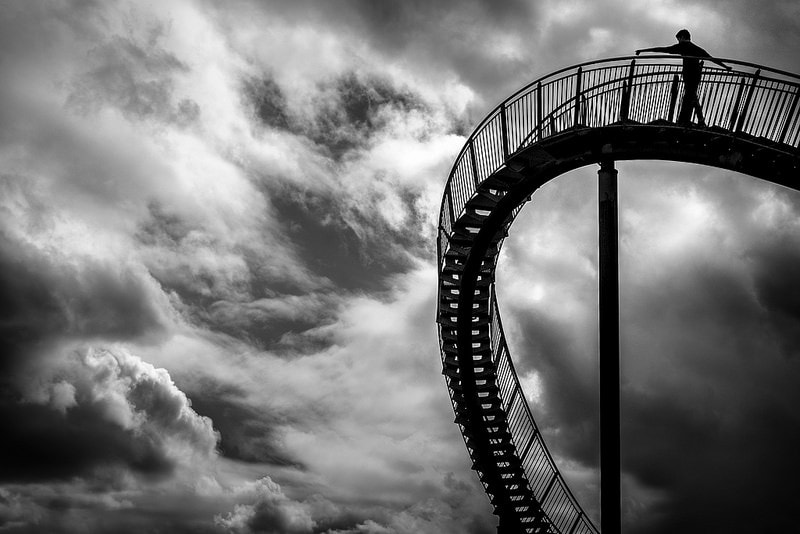|
This case is a composite of several different patients and is for illustrative purposes only. The patient's name has been changed to protect anonymity. Blair is a 17 year old that was seen in my office Mar 2017 after a psychiatric hospitalization due to a failed suicide attempt. He had 2 previous psychiatric hospitalizations in Dec 2016 after similar failed suicide attempts. He was also in an Intensive Out-Patient program 1 1/2 years ago for management of his persistent depression. He was referred to me after not responding to treatment by his previous psychiatrist. During his initial psychiatric evaluation, he reported that he had no energy, no motivation to go to school, he did not want to associate with family and friends, his performance in school was suffering, and he was feeling that life was hopeless. His depression was persistent despite being on Zoloft 200mg per day. His depression also did not improve after being tried on Lexapro, wellbutrin and ritalin.
He also had anxiety symptoms manifested by "worrying", "overthinking", "overanalyzing" things in his head where it made it difficult for him to concentrate and pay attention. He also had panic symptoms including frequent attacks of depersonalization, derealization, shortness of breath, palpitation, chest pain, sweating, trembling, shaking and muscle tension. Of note was his description of his mood. He describes his "mood swings" as cyclical having "ups" in which he feels he has increased energy, increase in goal-directed activities, racing thoughts, fast speech, decreased need for sleep then he feels "down" and depressed. These periods of "ups" did not last long and would only appear periodically. By far his predominant mood was his depression. As mentioned, he had been on a few antidepressant medications which did not seem to help. He described that they initially would work but the benefits would taper with time. He would eventually feel as if he was not taking an antidepressant at all. Blair was also seeing a psychotherapist on a weekly basis which helped but did not alleviate his symptoms of depression and anxiety. His parents were supportive of treatment and therapy. During the initial psychiatric evaluation, his medications included wellbutrin, zoloft, trazodone, and ambien. He had no other extenuating medical disorders and no allergies to medications. Blair reports no other family members with depression, bipolar disorder, suicide attempts or drug and alcohol problems. Blair denied any use of drugs or alcohol. He denied hearing "voices" or feeling paranoid. He denies any history of verbal, physical or sexual abuse or any other traumatic events. During the evaluation, Blair's affect mental status exam showed a 17 year old Caucasian male who looked his stated age, well developed and nourished, and alert and oriented to person, place and time. His affect was predominantly sad, anxious, "worried". His range of mood was constriction but his stability was normal and he related well to the interviewer. My assessment was that Blair was suffering from Bipolar 2 Disorder, Generalized Anxiety Disorder, and Panic Disorder. I can surmise that his previous treatment focused on unipolar depression and not bipolar depression. Therefore, he would need a mood stabilizer to treat his bipolar 2 disorder. Patients with more than 1 co-occuring disorder, one has to focus on the mood disorder first as the foundation of treatment. Also, he has significant anxiety symptoms that need to be addressed. Usually, zoloft at 200mg is an effective dose for anxiety but clearly this is not the case. A different antidepressant would need to be considered at a later time. I prescribed Latuda (lurasidone) for Blair starting at 20mg daily titrated over the next few visits to 80mg per day. I also tapered then discontinued the zoloft and wellbutrin since these were not effective. His mood gradually improved but relapsed into a depression with latuda alone. Due to unforeseen circumstances, Blair was forced to see another psychiatrist for a period of 6 months to manage his depression. The new psychiatrist started him on lamotrigine titrated to a level of 200mg and his Latuda was reduce to only 40mg per day. Fortunately, Blair was able to return to my practice on Jan 2018 to continue our work with his treatment. He continued to report persistent depression and anxiety although he admits to initial improvement with lamotrigine. I decided to continue the lamotrigine titration and maximize his dose to 400mg. During the lamotrigine titration, I decided to taper then discontinue the lurasidone. However, he did not do well with this discontinuation as his depression became worse. He did do better with re-introduction of lurasidone up to 80mg per day in addition to his lamotrigine 400mg. It appeared that he needed 2 mood stabilizers instead of one. At this junction, Blair's mood is stable but he remained depressed and anxious. I decided to prescribe duloxetine titrated to a dose of 90mg per day over the next few visits. This seemed to have done the trick. After a few weeks, he reported that he had more energy, more motivation and is more sociable with friends and family. Also, at 90mg of duloxetine, he reports that his anxiety and "worrying" no longer are present and that he can think more clearly and concentrate more effectively in school. He is now on the following medications: Lurasidone 80mg, lamotrigine 400mg, duloxetine 90mg, and trazodone 225mg for sleep. DISCUSSION: This case illustrates several important points:
2 Comments
3/14/2023 10:27:38 am
Thank you for this very helpful article. Here are some general tips to help someone with bipolar disorder:
Reply
Leave a Reply. |
AuthorDr Jesalva is a psychiatrist. He is in private practice in Thousand Oaks, CA since 1989. He successfully treats very challenging patients with varying co-occurring disorders with medications. Archives
May 2024
Categories
All
|

 RSS Feed
RSS Feed